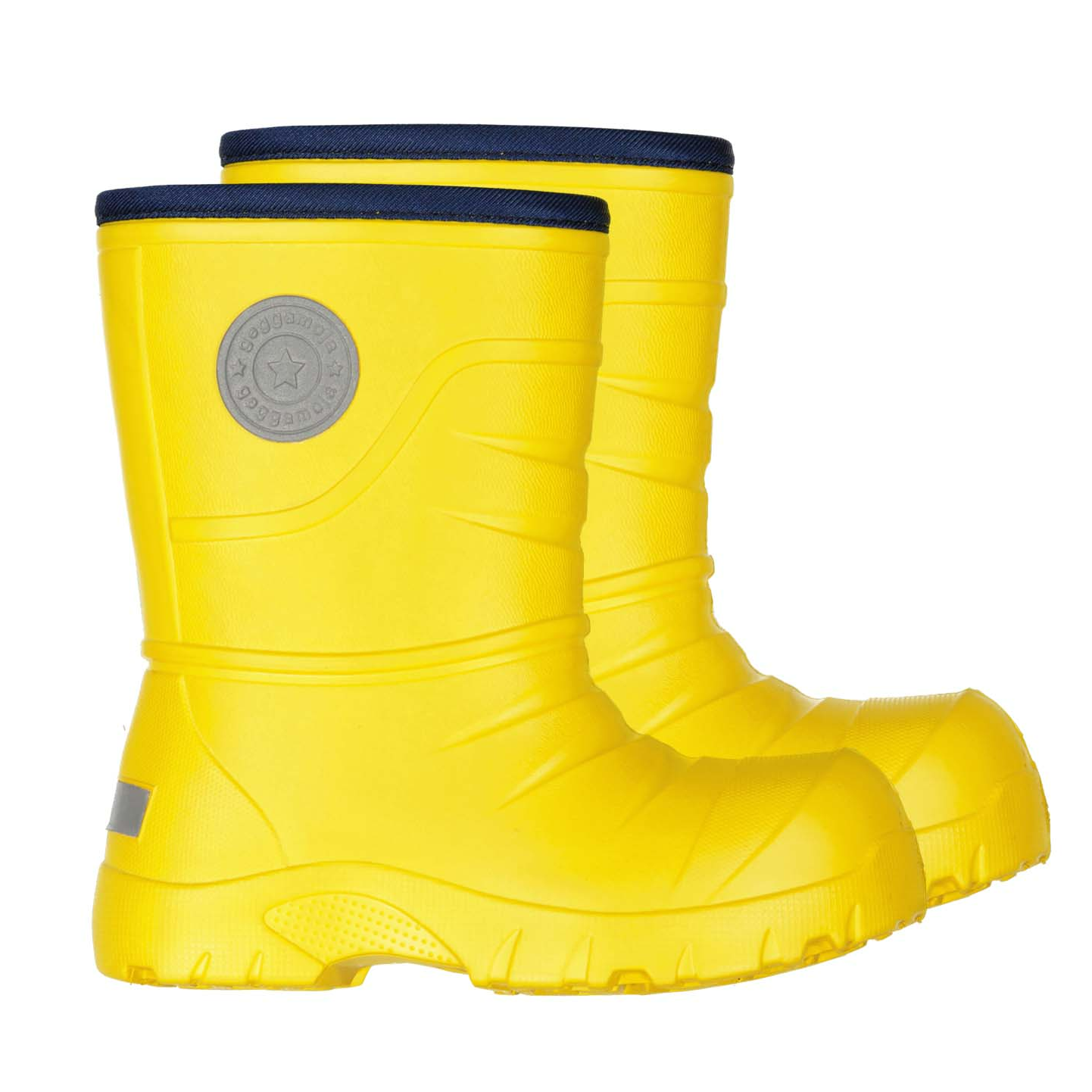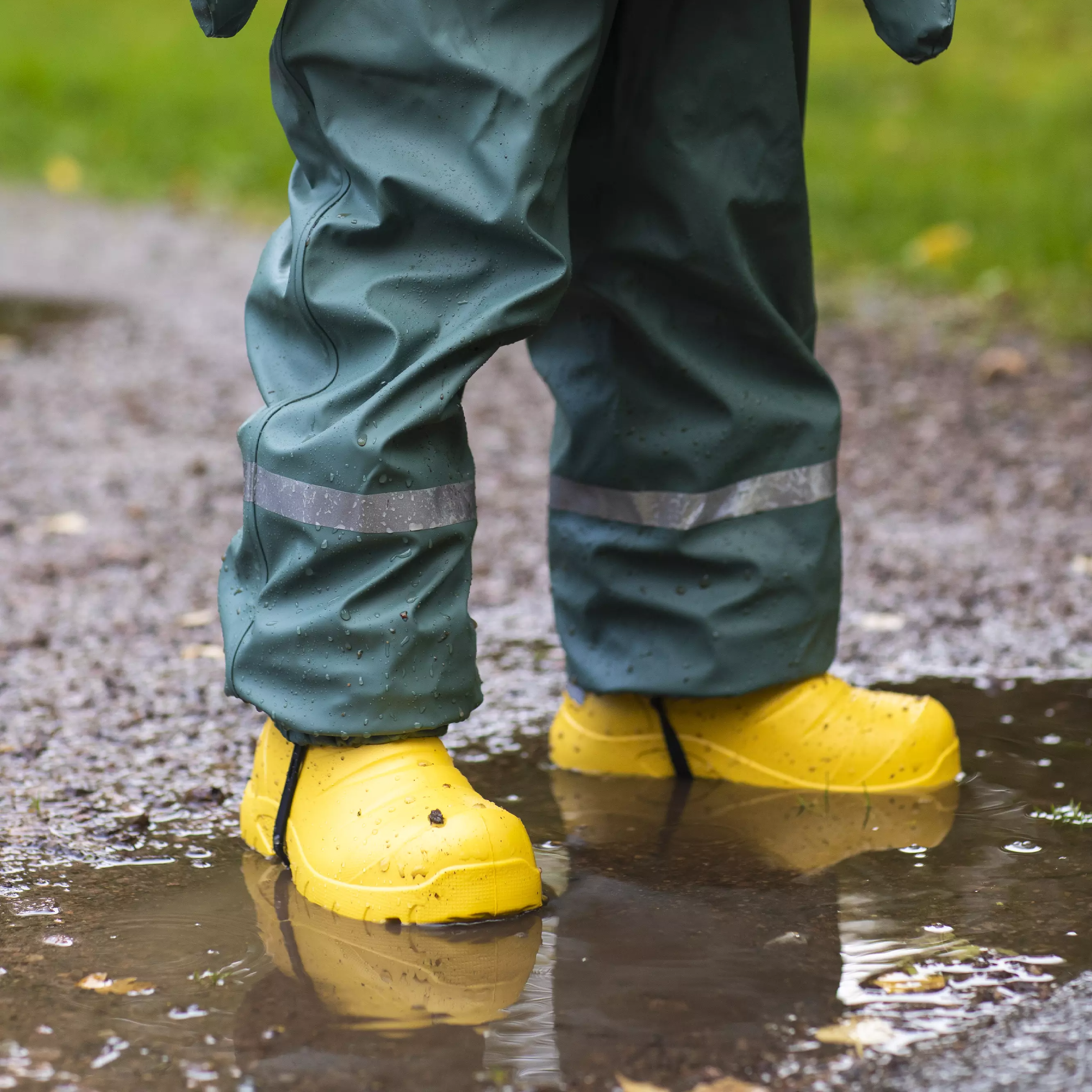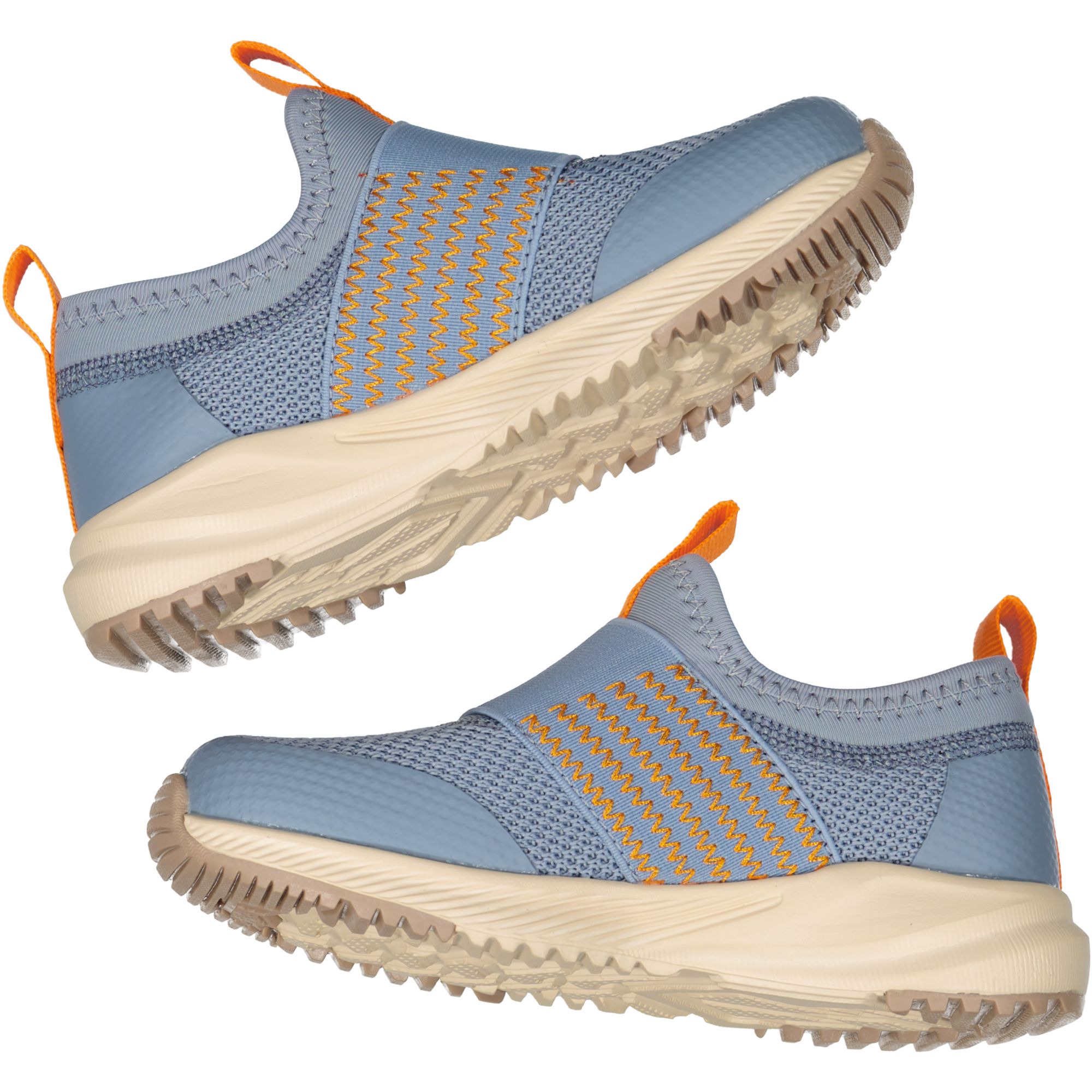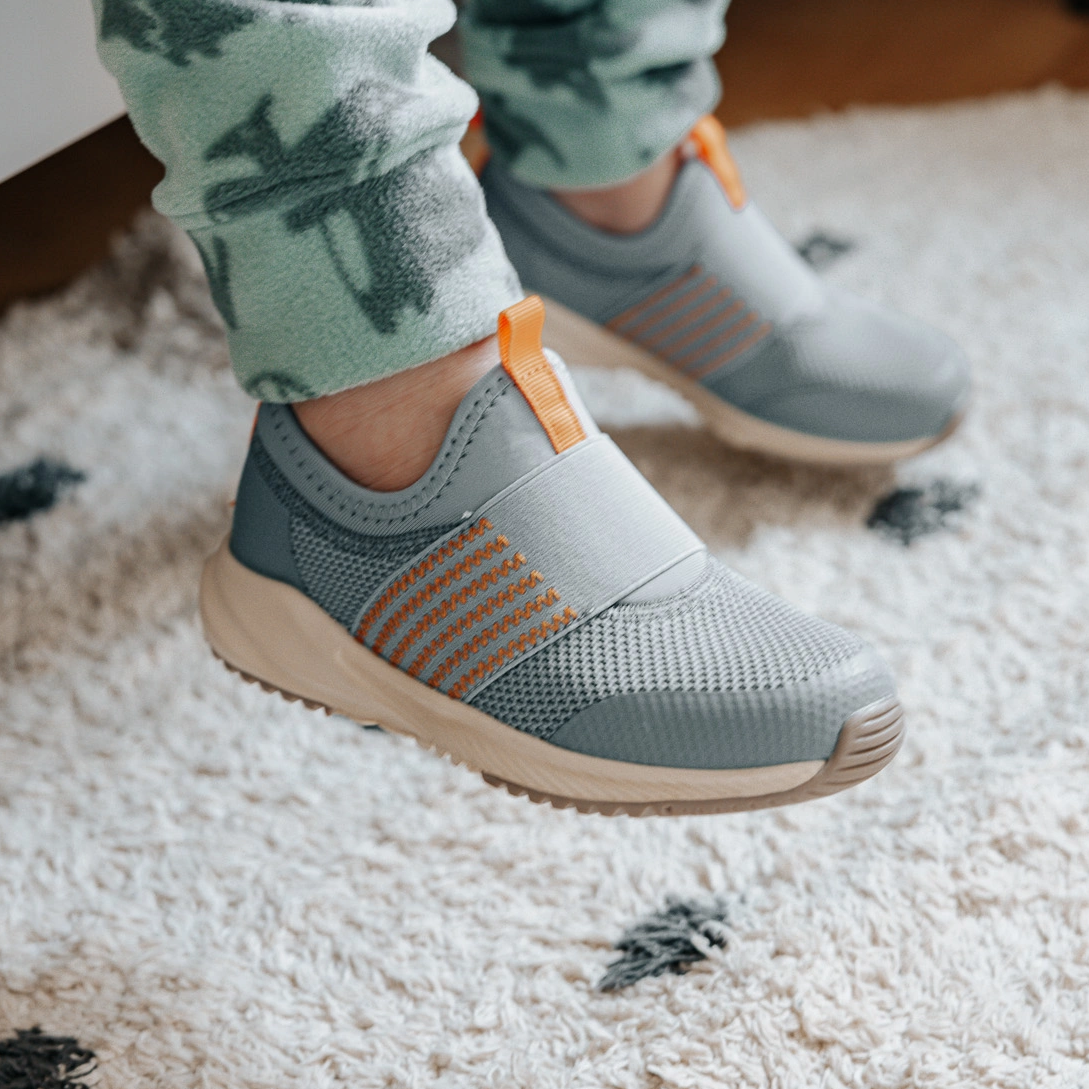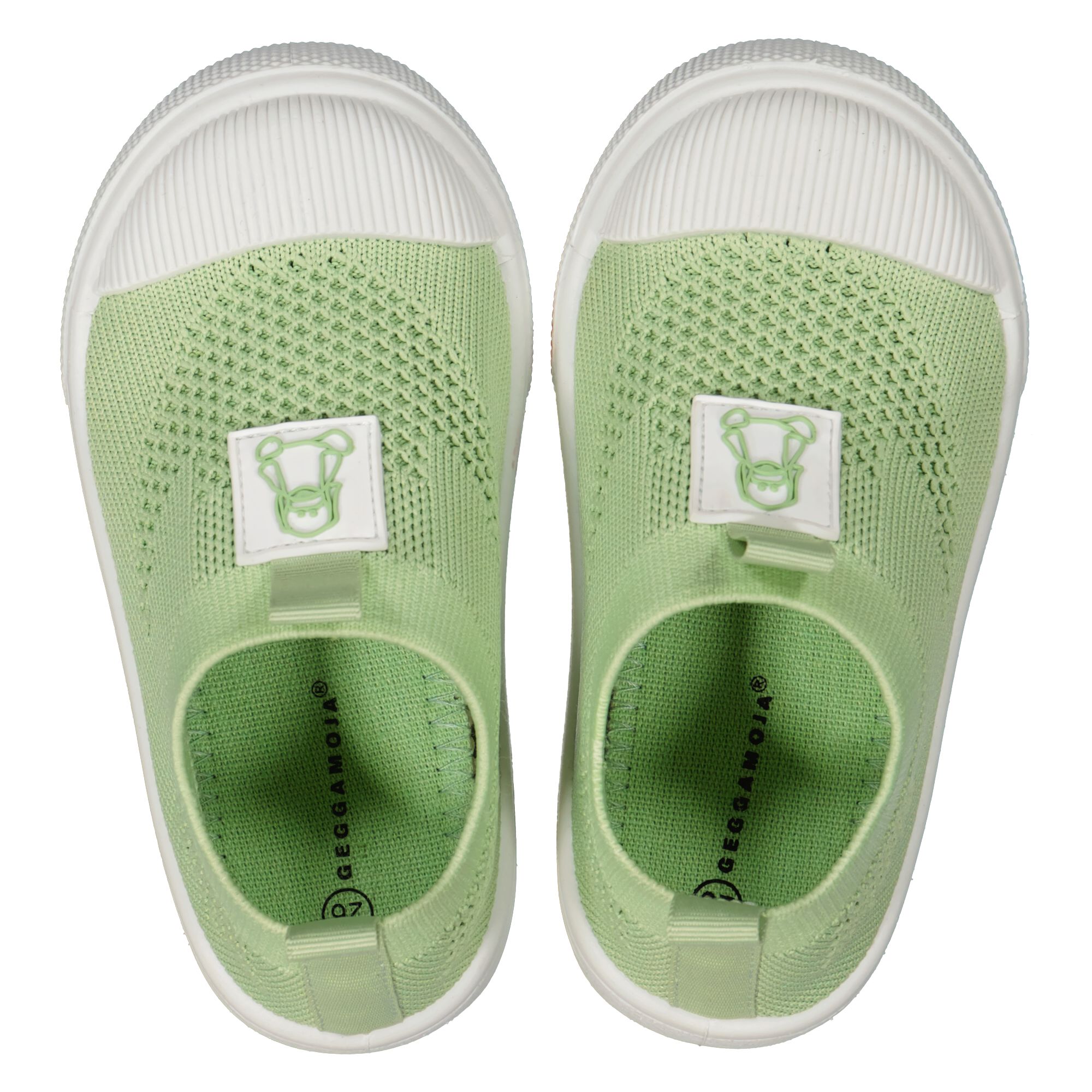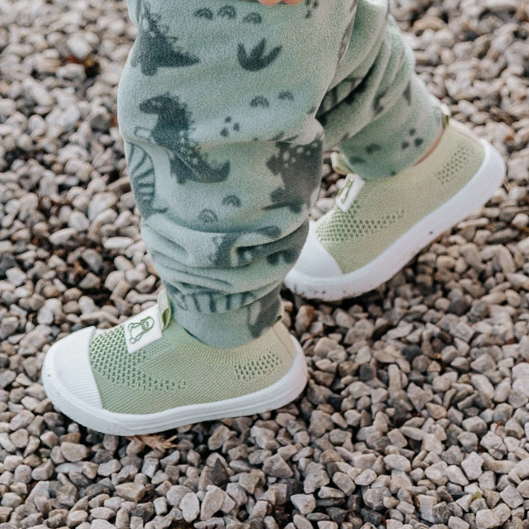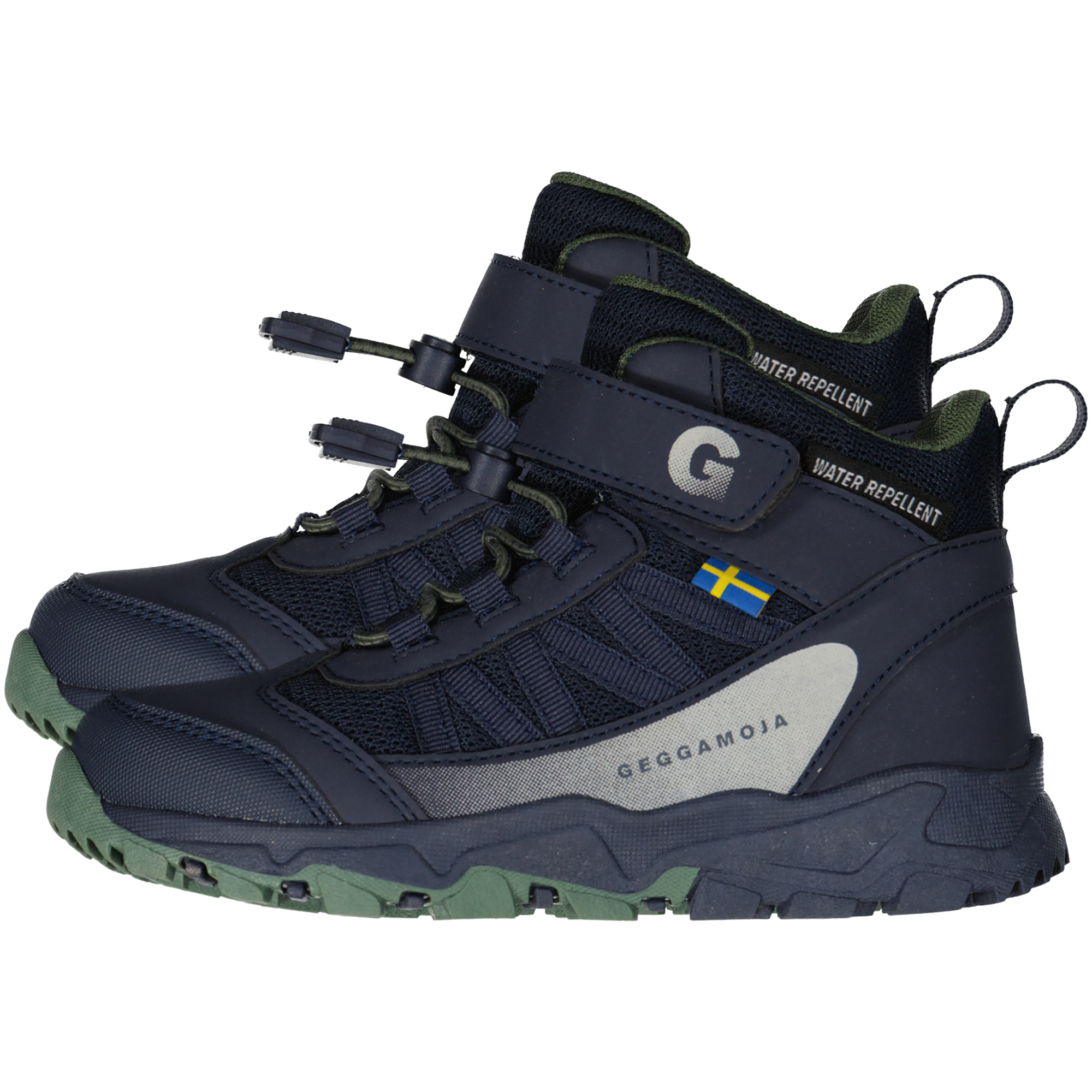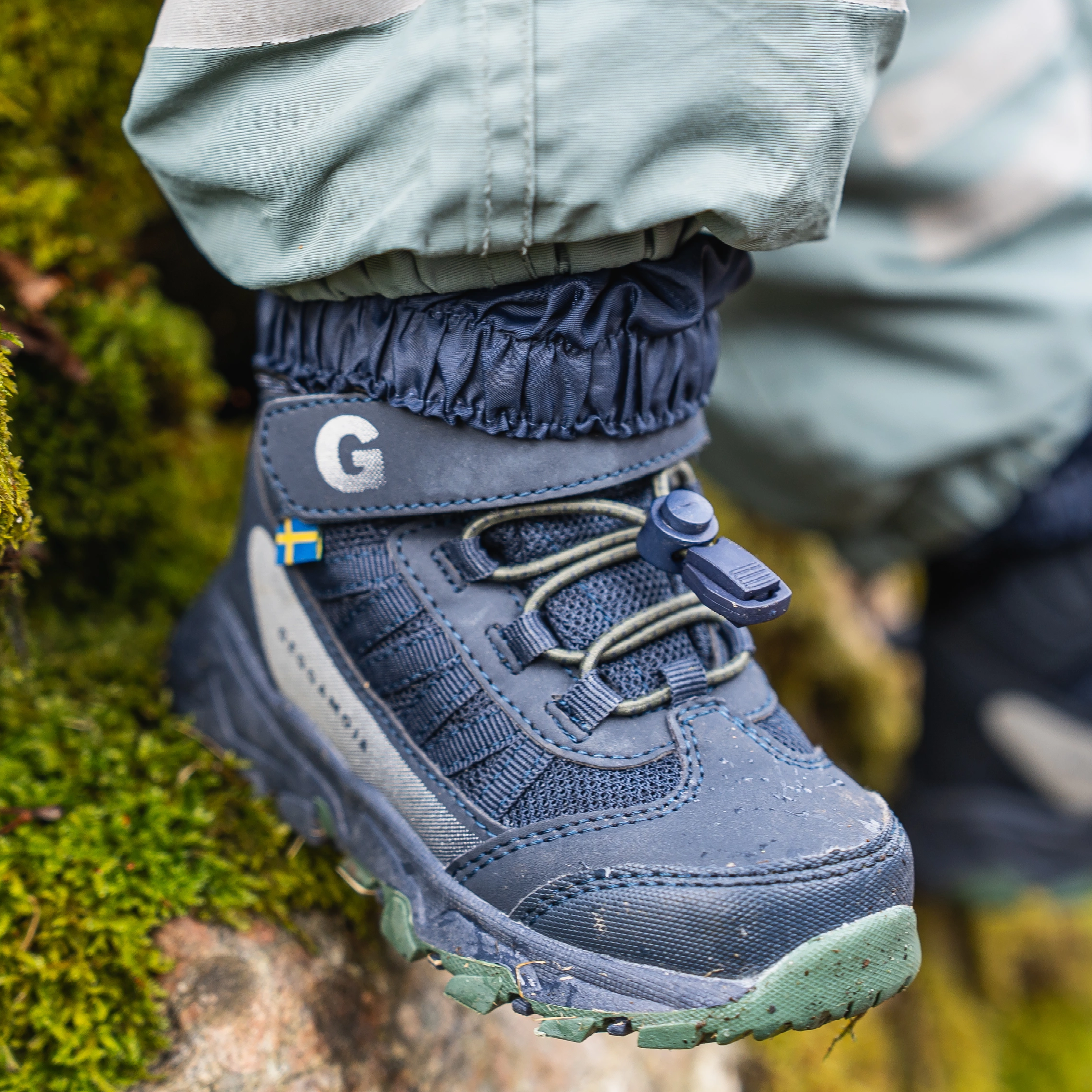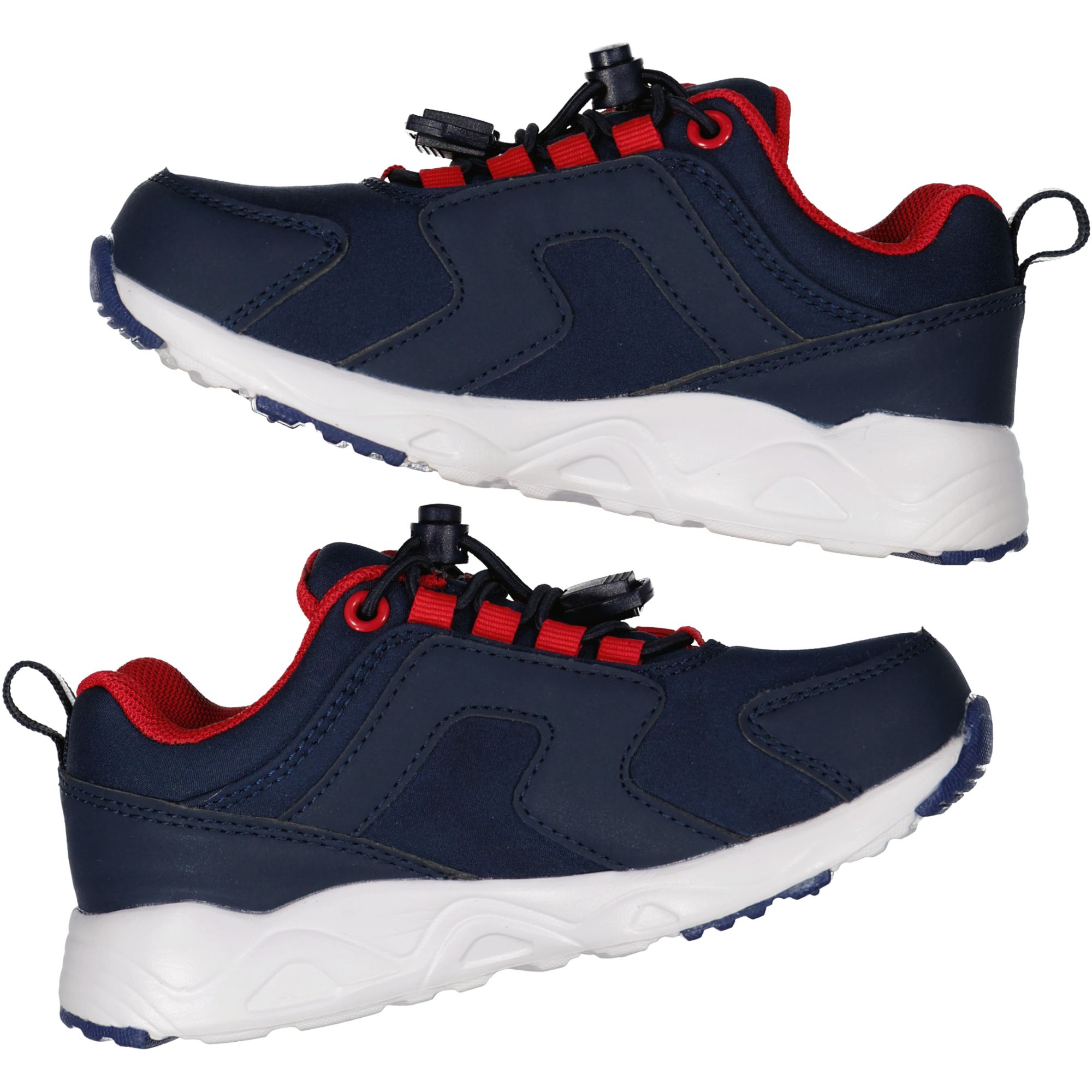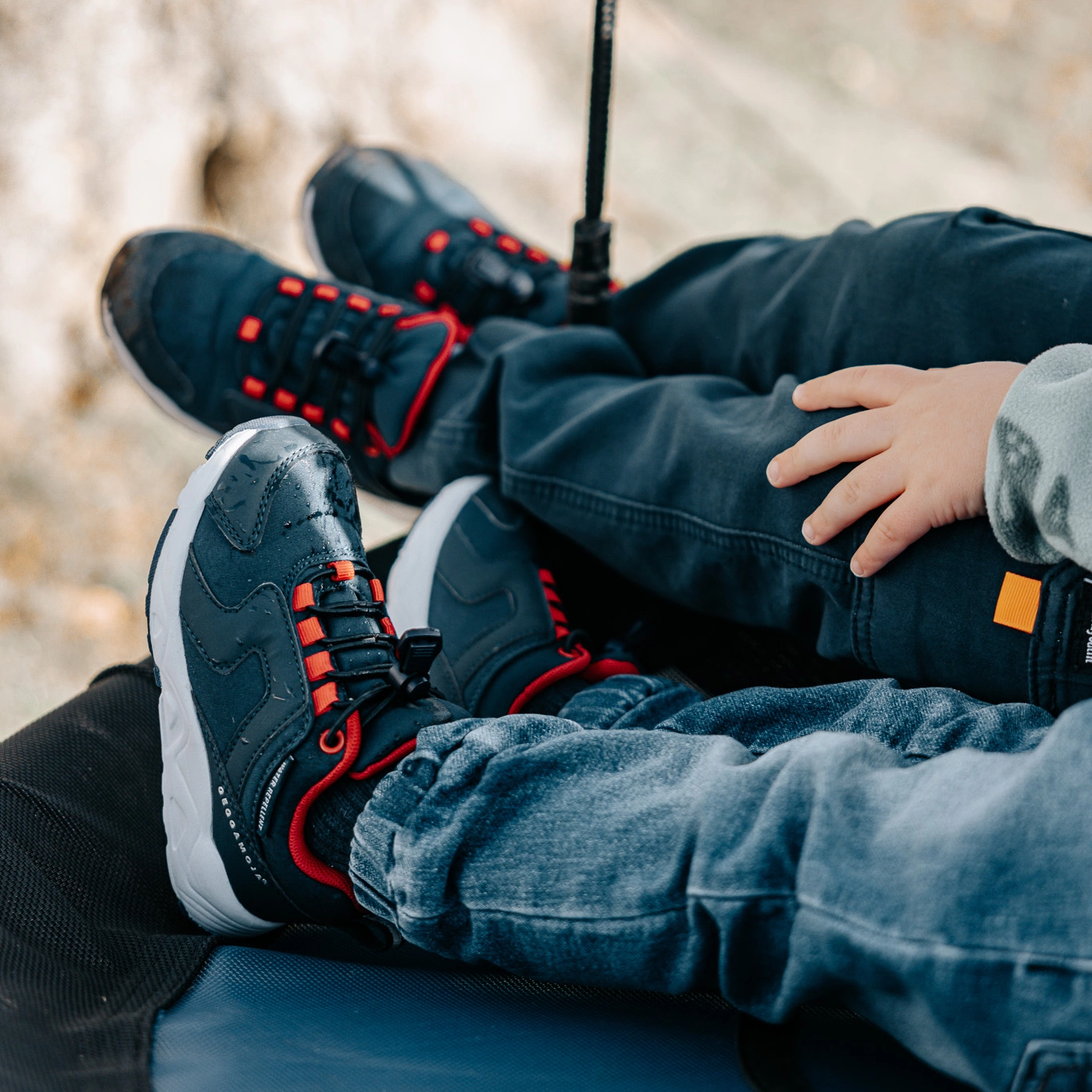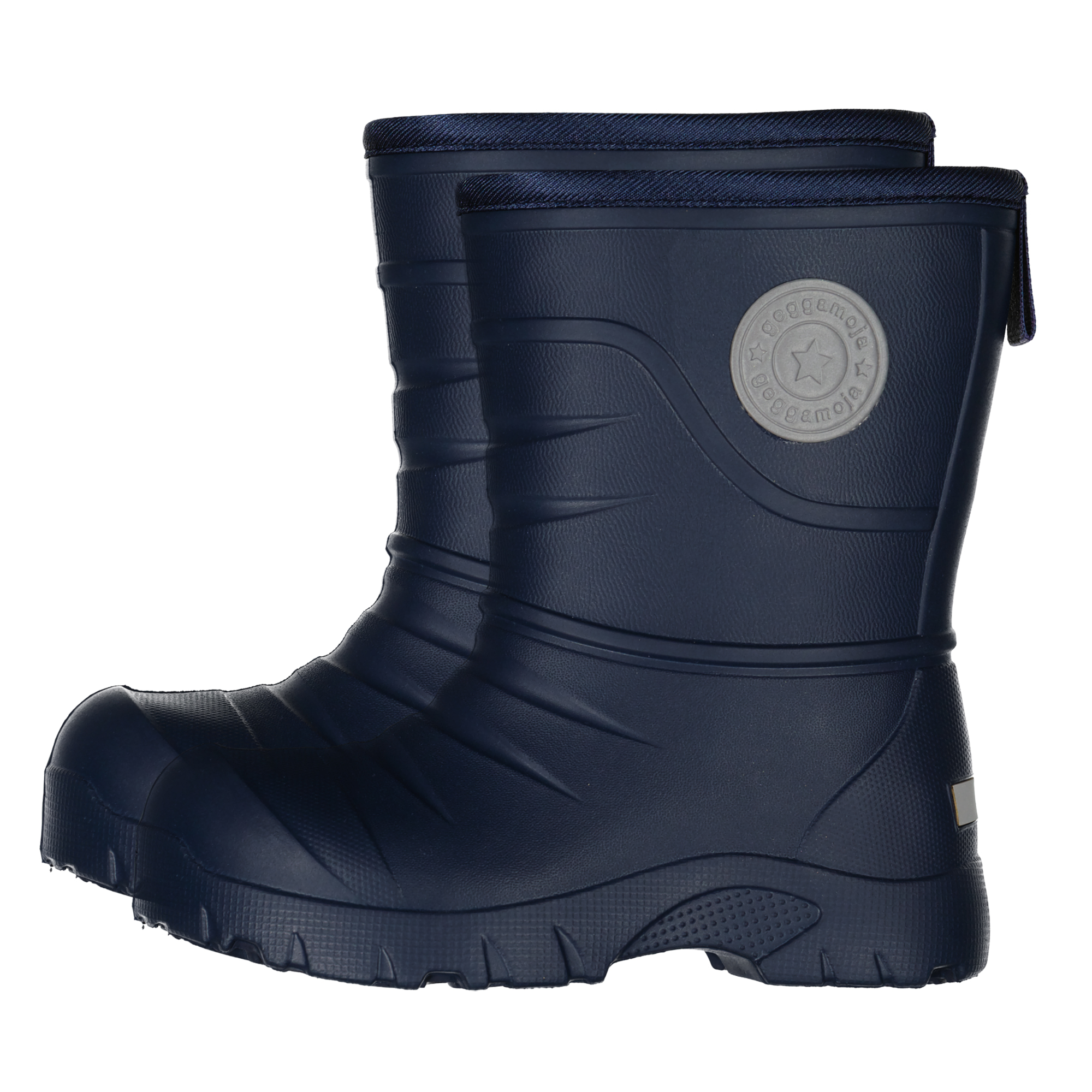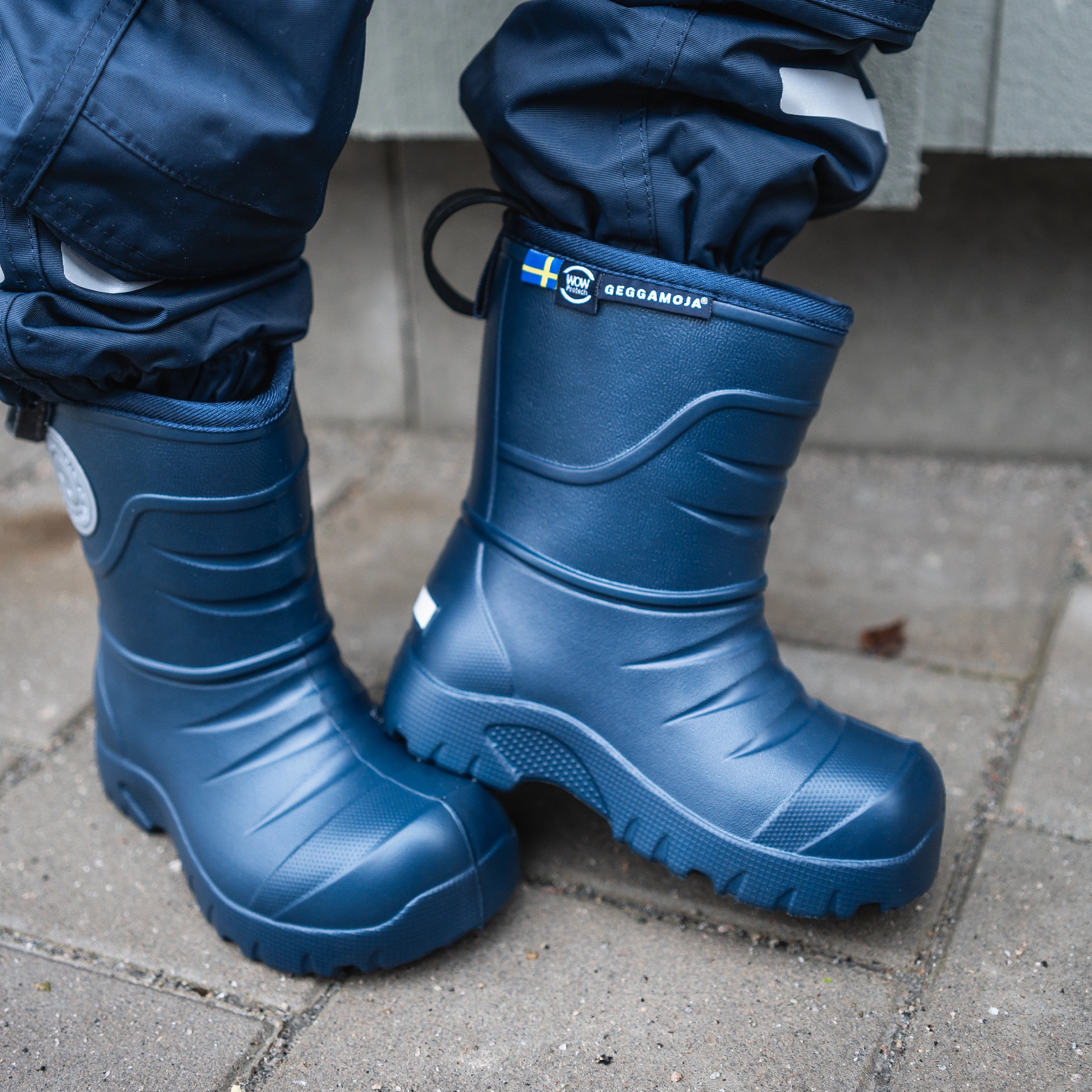What size should I buy?
The size of Geggamoja clothes is counted in centimeters, so called CL (centimeters long). The measurement is based on how tall the child is. A general advice is to go with the size that the child is closest.
For example; The child is 97 cm long - I choose size 98/104
Good to know:
The dimensions in size charts available on each of our products is the size of the garment. This is to make it easier for you to decide the fit. An easy way to see what is your right size is to measure garments from home and compare.
How should children's clothes fit?
The fit of the children's garments is of course super important. We want the garment to fit well and not restrict the child in their movement and play, at the same time it is always desirable that they do not grow out of the garment in a short time. Here we go through how measure and choose exactly the right size.
Children's clothing must never impede natural movement. The size should have enough space for the child to jump, crawl, run, hang, cycle, climb and all other adventures our little ones can invent. Imagine yourself walking in such long pants that they constantly fall under your foot or that you have to shake your hands out of the sweater. So too loose is not good and of course, too tight makes it difficult to move freely. So we aim for the fantastic - just enough!
Pants should hold up when the child is running fast, end approximately at the ankle and they should be roomy enough to squat. Geggamoja has cuffs on our soft pants, so there is room to grow without the child tripping over leg ends. Even leggings and tights can be a little bigger. Jeans, on the other hand, should be bought so that it fits now, otherwise there is a risk that it will be chubby under shell clothing or become too tight around the stomach.
What size in shell clothing?
It is important that there is room for extra layers under the shell clothing. You should be able to have extra sweater and fleece under the shell jacket without it tightening over the shoulders. . The child should be able to stretch the arms straight up without the abdomen becoming visible or the sleeves going up over the wrists.
The size of the shell trousers should also have room for intermediate layers and the child should be able to squat without tightening over the buttocks. Even if it is tempting to buy shell trousers that are a little big to be able to grow in, it is important that the leg closures do not go down under the feet or shoes as they will break due to unnecessary wear. Try on with shoes and make sure that it is not tight when the footrests are attached under the shoes. A few high knee raises, climbing up for a table and crawling around a bit can usually be a good test to see that you are the right size.
How is Geggamoja in sizes?
Our ambition is that every piece of garment should have an updated size chart, to make it easy for you to buy the right size. In general our clothes is true to size or in the larger direction.
Are you still thinking about which size to buy? We are here for you, contact us at support@geggamoja.com or call +468-7582882 (Swedish or English) and we will help you choose the right size.
What size hat?
When buying a hat, an option is to go by age. This is in most cases current and gets pretty right. Then, of course, there are always exceptions, where you have a larger or smaller head. Therefore, we recommend that you measure the circumference of the head. Measure in the middle of the forehead and around the head so that you get the circumference at the widest point. When you get a pair of fingers in under the edge of the hat without problems it is big enough. If the hat is too small, it will slide up or leave marks on the forehead. Too big a hat is not good either, then it will fall down over the eyes and disturb the playtime.
Geggamoja also has premature hats, read the product page to see specific measurements for them.
Thin hats in bamboo or cotton are very elastic and if your size is between the size range, our recommendation is to go with the smaller one.
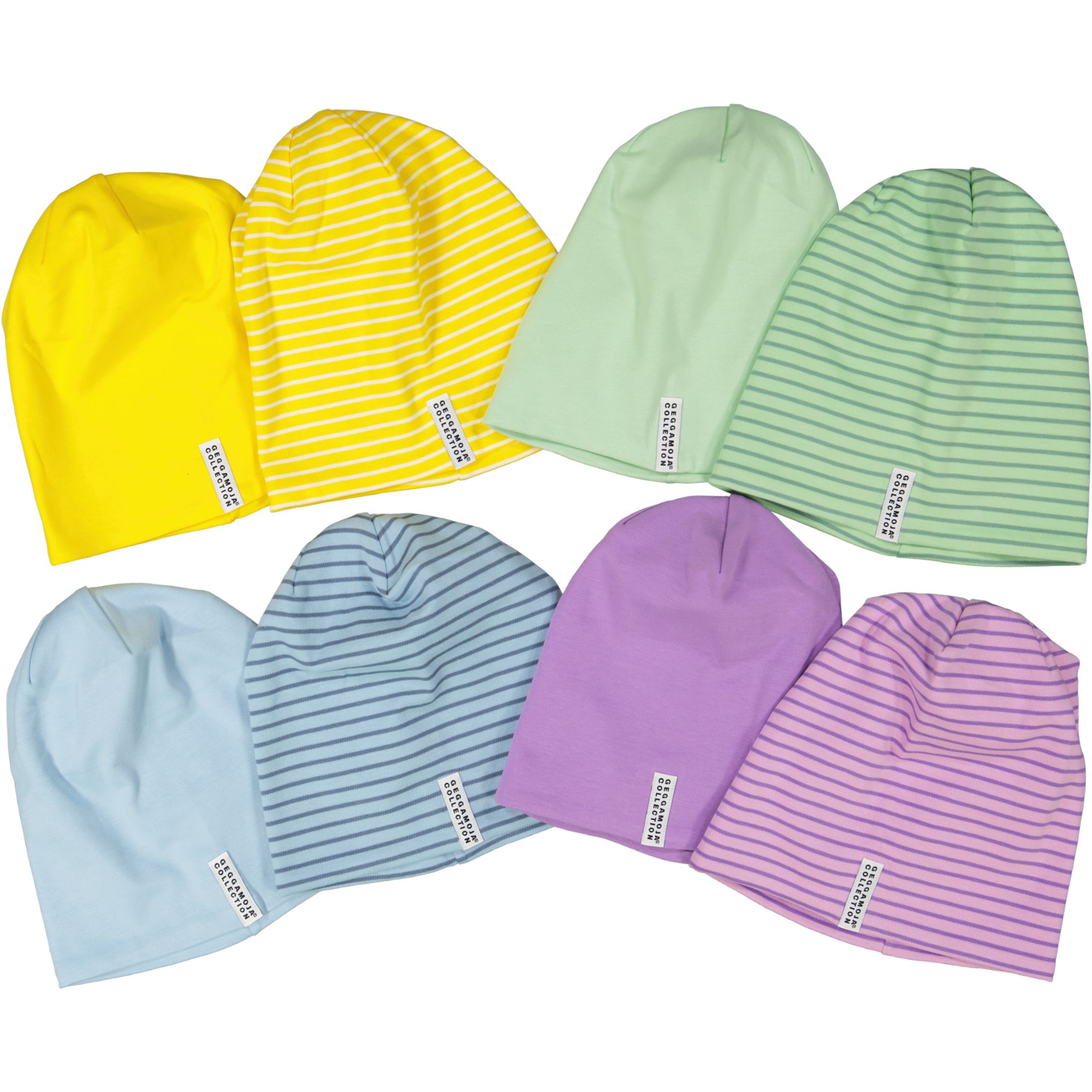

Size chart- Shoes
Finding the right size of children's shoes can be a jungle! Especially because all brands and often also models differ, sometimes quite a lot. In order for the shoe to fit well, you therefore need to measure the feet of the child.
Children's feet often grow in shocks, stand still for a while and then grow a lot in a short time. Therefore, always make sure to measure in direct connection with shoe purchases.
How to measure baby feet?
1) Lay a piece of paper on the floor and slide it against the wall, making sure it is still (maybe a piece of tape fits well?)
2) Ask the child to stand on the paper with both heels pushed against the wall.
3) Draw a line straight from the top at the longest toe. Some people find it easier to take a book and keep it in line with the toe and then draw along that edge.
4) Always measure both feet as it often differs a little.
5) Now you have the measurement of the feet, starting from the longest foot.
There are also real foot gauges to buy or at the shoe store, the most important thing is always to measure both feet and that the child stands up. The best measure is usually given in the evening / afternoon when the feet swell a bit from running around and getting warm. Small children may need to "straighten" their toes a bit to get a completely correct measurement.
How much room for growth in chidren´s shoes?
Shoes should not be bought too small, it prevents mobility and often children do not tell but fold their toes and get used to that feeling. The inner measurement in sneakers and lighter boots should be about 10-15mm longer than the foot. For nicer summer shoes, 10mm is usually enough, especially if they lack velcro or lacing. Measure the insole of the shoe with a shoe gauge or pick out the insole and measure it. Measuring the underside of the shoe is not correct as it usually expands much more than the inner measurement.
Narrow baby feet, how to think then? Yes, we are all different and some children may have very narrow feet. It is often not practical at all to add 15mm. Instead, aim for closer to 10mm and always make sure that the shoe is adjustable so that it is firmly attached.
How much extra space in boots?
Boots can be a little bigger, unlined boots are used during both colder and warmer days and therefore it is good to fit with a thicker sock. This of course also applies to required boots. Between 15-20 mm is usually good to aim at. If it is at the beginning of the season and you want to get in a warmer sole, it is better to go for closer to 20 mm.

